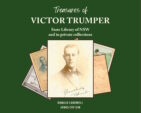Bradman’s Invincibles
Archie Mac |Published: 2008
Pages: 474
Author: Perry, Roland
Publisher: Hachette
Rating: 3 stars
This has to be one of the longest publications on a single cricket tour; at 474 pages it is only three pages shorter then David Frith’s magnum opus Bodyline Autopsy. It should be said that the last 180 odd pages of Bradman’s Invincibles are short pen portraits of the combatants from both countries.
Bradman’s Invincibles is an ‘easy read’ and although a large book it flows quite well, with the author doing a workmanlike job. Perry includes almost all of the well know anecdotes associated with the tour, and more importantly keeps the narration on the tour matches brief, just dealing with the highlights of each match.
In the acknowledgements Perry mentions that he spent three weeks interviewing Bradman about the 1948 tour. Unfortunately in the end there were no real revelations of any great controversies or unknown behind the scene titbits, and you have to wonder just how many more books Perry can write on the back of his relationship with the Don.
The author is also guilty of not checking his facts; early in the book he makes a big deal of comparing the Bradman 1948 campaign with that of Warwick Armstrong?s 1921 tour. Telling us that; “his (Bradman) 1938 dream of overcoming the record of Warwick Armstrong had evaporated”, and that; “Armstrong’s 1921 team lost just one match outside the Tests”.
The 1921 team actually lost two games on the tour. It is this sort of slack fact checking that has had many criticizing the credentials of Perry as a serious cricket historian.
The other thing that also annoys me is the authors habit of expressing his opinion of cricketers and events as fact. For instance rather then saying that Headly Verity is arguably the greatest ever left arm off spin bowler, Perry writes: “Verity the finest exponent ever of Hilton’s (a fellow purveyor of left arm off spin) bowling style”. It would be argued by many, A.A. Thomson – if he was still with us – for one, that Verity would not even be the best lefty from Yorkshire.
As is standard fair for the author he is 100% behind Bradman, and never gives even the slightest hint of criticism of the great man, and if anything goes the other way, justifying Bradman at every turn, even absolving him of blame for the omission of Tallon from the 1938 Test tour. This selection, to many was even more unforgivable then the omission of Grimmett and Ross Gregory from the same tour.
The pen portraits in the book were also a disappointment, with many of the players covered simply being lifted from Bradman’s Best Ashes Teams, with the addition of a summary of their impact on the 1948 series. It is also surprising in a book of this size that not one score card is provided, or even the tour averages.
I think this an ideal read for anyone wanting to know more about one of the greatest of all cricketing teams, but for those with a real understanding of the history of the greatest game, you will not learn anymore than that covered in the classic Brightly Fades The Don by Jack Fingleton.






Leave a comment